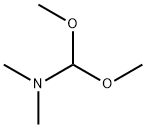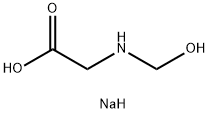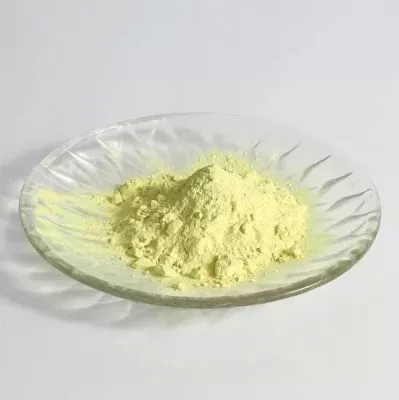N,N-Dimethylglycine
Synonym(s):(Dimethylamino)acetic acid
- CAS NO.:1118-68-9
- Empirical Formula: C4H9NO2
- Molecular Weight: 103.12
- MDL number: MFCD00004283
- EINECS: 214-267-8
- SAFETY DATA SHEET (SDS)
- Update Date: 2024-12-18 14:08:57

What is N,N-Dimethylglycine?
Description
N,N-Dimethylglycine (DMG) is a N-methylated product of the amino acid glycine. It is found in beans and liver. It can be formed from trimethylglycine upon the loss of one of its methyl groups. It is also a byproduct of the metabolism of choline. When DMG was first discovered, it was referred to as vitamin B16, but, unlike true B vitamins, deficiency of DMG in the diet does not lead to any ill-effects meaning it does not meet the definition of a vitamin. It is used in comparative analysis with other N-methylated glycines. N,N-Dimethylglycine is used in the development of glycine-based ionic liquids and emulsifiers, and as a substrate to identify, differentiate and characterize amino acid methyltransferase(s). It is potentially useful as a biomarker of protein degradation in COPD patients.
Chemical properties
white to slightly yellow crystalline powder
The Uses of N,N-Dimethylglycine
N,N-Dimethylglycine is used as an athletic performance enhancer and immunostimulant. It is also used in the treatment of autism, epilepsy and mitochondrial disease. It is also employed as a biomarker of protein degradation in chronic obstructive lung disease (COPD) patients. Further, it is used as a substrate to identify, differentiate and characterize amino acid methyltransferase. It plays an important role for the development of glycine-based ionic liquids and emulsifiers.
What are the applications of Application
N,N-Dimethylglycine is a natural N-methylated glycine
Definition
ChEBI: N,N-dimethylglycine is an N-methylglycine that is glycine carrying two N-methyl substituents. It has a role as a human metabolite, a Daphnia magna metabolite and a mouse metabolite. It is a N-methyl-amino acid and a member of N-methylglycines. It is a tautomer of a N,N-dimethylglycine zwitterion.
Preparation
N,N-Dimethylglycine is commercially available as the free form amino acid, and as the hydrochloride salt [2491-06-7 ]. DMG may be prepared by the alkylation of glycine via the Eschweiler–Clarke reaction. In this reaction, glycine is treated with aqueous formaldehyde in formic acid that serves as both solvent and reductant. Hydrochloric acid is added thereafter to give the hydrochloride salt. The free amino acid may been obtained by neutralization of the acid salt, which has been performed with silver oxide.
H2NCH2COOH + 2 CH2O + 2 HCOOH →(CH3)2NCH2COOH + 2 CO2 + 2 H2O.
What are the applications of Application
N, N-dimethylglycine (DMG) is a tertiary amino acid that naturally occurs as an intermediate metabolite in choline-to-glycine metabolism. It has been suggested for use as an athletic performance enhancer, immunostimulant, and a treatment for autism, epilepsy, or mitochondrial disease . Published studies on the subject have shown little to no difference between DMG treatment and placebo in autism spectrum disorders.
General Description
N,N-Dimethylglycine is a type of quaternary ammonium compound which exhibits a variety of biological effects.
Biochem/physiol Actions
N,N-Dimethylglycine (DMG) is a natural N-methylated glycine that is used in comparative analysis with other N-methylated glycines such as sarcosine and βine. N,N-Dimethylglycine is used in the development of glycine-based ionic liquids and emulsifiers. N,N-Dimethylglycine is potentially useful as a biomarker of protein degradation in COPD patients. DMG is used as a substrate to identify, differentiate and characterize amino acid methyltransferase(s).
References
J. K. Kern, V. S. Miller, L. Cauller, R. Kendall, J. Mehta, M. Dodd, Effectiveness of N,N-Dimethylglycine in Autism and Pervasive Developmental Disorder, Journal of Child Neurology, 2001, vol. 16, pp. 169-173
Properties of N,N-Dimethylglycine
| Melting point: | 178-182 °C(lit.) |
| Boiling point: | 193.35°C (rough estimate) |
| Density | 1 g/cm3 |
| refractive index | 1.4674 (estimate) |
| storage temp. | Keep in dark place,Sealed in dry,Room Temperature |
| solubility | Methanol (Slightly), Water (Slightly) |
| form | Crystalline Powder |
| pka | 9.89(at 25℃) |
| color | White to slightly yellow |
| Water Solubility | soluble |
| Sensitive | Hygroscopic |
| Merck | 14,3244 |
| BRN | 1700261 |
| CAS DataBase Reference | 1118-68-9(CAS DataBase Reference) |
| EPA Substance Registry System | Glycine, N,N-dimethyl- (1118-68-9) |
Safety information for N,N-Dimethylglycine
| Signal word | Warning |
| Pictogram(s) |
 Exclamation Mark Irritant GHS07 |
| GHS Hazard Statements |
H302:Acute toxicity,oral |
| Precautionary Statement Codes |
P264:Wash hands thoroughly after handling. P264:Wash skin thouroughly after handling. P270:Do not eat, drink or smoke when using this product. P330:Rinse mouth. P501:Dispose of contents/container to..… |
Computed Descriptors for N,N-Dimethylglycine
| InChIKey | FFDGPVCHZBVARC-UHFFFAOYSA-N |
N,N-Dimethylglycine manufacturer
Jeevan Chemicals and Pharmaceuticals
New Products
(S)-3-Aminobutanenitrile hydrochloride 4-Methylphenylacetic acid N-Boc-D-alaninol N-BOC-D/L-ALANINOL Tert-butyl bis(2-chloroethyl)carbamate N-octanoyl benzotriazole 3-Morpholino-1-(4-nitrophenyl)-5,6-dihydropyridin- 2(1H)-one Furan-2,5-Dicarboxylic Acid S-2-CHLORO PROPIONIC ACID ETHYL ISOCYANOACETATE 2-Bromo-1,3-Bis(Dimethylamino)Trimethinium Hexafluorophosphate 4-IODO BENZOIC ACID 3-NITRO-2-METHYL ANILINE 1-(2,4-DICHLOROPHENYL) ETHANAMINE (2-Hydroxyphenyl)acetonitrile 4-Bromopyrazole 5,6-Dimethoxyindanone 2-(Cyanocyclohexyl)acetic acid 4-methoxy-3,5-dinitropyridine 1-(4-(aminomethyl)benzyl)urea hydrochloride 2-aminopropyl benzoate hydrochloride diethyl 2-(2-((tertbutoxycarbonyl)amino) ethyl)malonate tert-butyl 4- (ureidomethyl)benzylcarbamate Ethyl-2-chloro((4-methoxyphenyl)hydrazono)acetateRelated products of tetrahydrofuran








You may like
-
 N,N-Dimethylglycine 1118-68-9 99%View Details
N,N-Dimethylglycine 1118-68-9 99%View Details
1118-68-9 -
 N,N-Dimethylglycine 99%View Details
N,N-Dimethylglycine 99%View Details -
 N,N-Dimethylglycine 98% CAS 1118-68-9View Details
N,N-Dimethylglycine 98% CAS 1118-68-9View Details
1118-68-9 -
 N,N-Dimethylglycine CAS 1118-68-9View Details
N,N-Dimethylglycine CAS 1118-68-9View Details
1118-68-9 -
 N,N-Dimethylglycine CAS 1118-68-9View Details
N,N-Dimethylglycine CAS 1118-68-9View Details
1118-68-9 -
 N,N-Dimethylglycine CAS 1118-68-9View Details
N,N-Dimethylglycine CAS 1118-68-9View Details
1118-68-9 -
 14714-50-2 (2-Hydroxyphenyl)acetonitrile 98+View Details
14714-50-2 (2-Hydroxyphenyl)acetonitrile 98+View Details
14714-50-2 -
 118753-70-1 98+View Details
118753-70-1 98+View Details
118753-70-1